Police Killings of Unarmed Black People: Why The ‘Bad Apples’ Defense Falls Apart

George Floyd (2020), Breonna Taylor (2020), and Oscar Grant (2009) were killed by police officers. They were all unarmed when they died.
June 19, 2020 ~ By Shari Rose
Updated June 29, 2020
- Police Personnel Records Kept Secret
- Fired Cops Find New Jobs At Different Departments
- False Information & Verified Lies in Police Reports
- Police Show Solidarity With Bad Cops
- Few Charges For Police Shooting Unarmed Black People
Police Personnel Records Kept Secret, Shielding Bad Cops From Consequences & Public Scrutiny
Complaints of use-of-force made by civilians against police officers are largely kept secret. Even when police are caught on video committing violent crimes, it is incredibly difficult to ensure that an officer faces consequences or is even prevented from inflicting the same violence over again. The confidentiality of officers’ personnel records works to protect bad cops from discipline and keeps them on the streets, even after killing unarmed people, and disproportionally, unarmed Black people.
Internal Investigations Into Police Misconduct
In a massive story by USA Today, journalists uncovered more than 200,000 incidents of police misconduct in the last decade, much of which had never been reported, due to secrecy surrounding police internal affairs. Reporters found that less than 10% of the 85,000 officers were ever even investigated after charges of police misconduct. They also found that almost 2,500 cops had been investigated on 10 or more charges of misconduct during their tenure with their respective police departments.
And keep in mind these are not objective, third-party inquiries. These are internal investigations completed by the police department that employs the officer. They are not unbiased, and have a strong interest in letting the officer off, especially when it comes to avoiding unwanted public scrutiny into the department’s internal affairs.
Officer Steven Pohorence
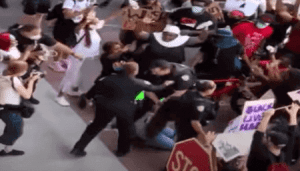
Fort Lauderdale police officer Steven Pohorence attacks a Black protester as she kneels during anti-police brutality protest on May 31, 2020. (Source)
During anti-police brutality protests in Fort Lauderdale, a police officer was caught on camera violently shoving a 19-year-old protester as she kneeled on the ground. After the incident went viral, officer Steven Pohorence’s personnel report reveled he had pulled out his gun in at least 50 different instances during his four years on the police force, most of which he had done during traffic stops. He pulled his pistol on mothers with their children in the car, and has been accused of racial profiling and excessive use of force in past civilian complaints. However, internal police investigations cleared him every time and allowed him to continue as a Fort Lauderdale officer.
Officer Garrett Rolfe
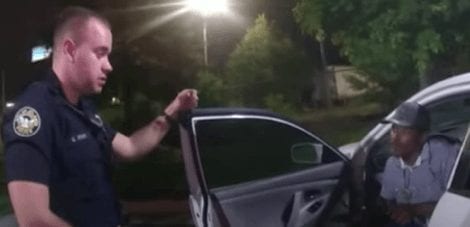
Video footage shows Atlanta police officer Garrett Rolfe speaking to Rayshard Brooks minutes before he shoots Brooks to death on June 12, 2020. (Source)
The officer who killed Rayshard Brooks in a Wendy’s parking lot on June 12, 2020, had been investigated for a litany of use-of-force claims made against him. Garrett Rolfe has been the subject of four citizen complaints, as well as five car accidents, since he was hired in 2013. Rolfe never faced any significant consequences from the department as a result of his violence.
Officer Derek Chauvin
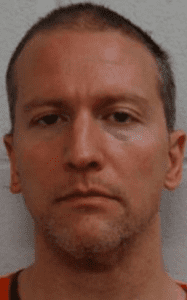
Minneapolis police officer Derek Chauvin’s mugshot (Source: Minnesota Correctional Facility – Oak Park Heights)
After Derek Chauvin and three fellow officers killed George Floyd, the public learned of his past through newly surfaced personnel records that covered his tenure at the Minneapolis Police Department. The department completed 17 investigations into his conduct, and in only one instance, Chauvin faced some form of reprimand from the department.
In 2007, Chauvin pulled a woman out of her car after she went 10 miles over the speed limit. He turned off the car’s dashcam video before approaching the woman. The Minneapolis Police Department sent him a “letter of reprimand” and Chauvin was back on the streets. In 2006 and 2008, he shot two people, one fatally, in two separate incidents.
In addition to his other crimes, it was discovered that Chauvin voted illegally in Florida in 2016 and 2018 as a registered Republican, so he will be facing charges for that as well.
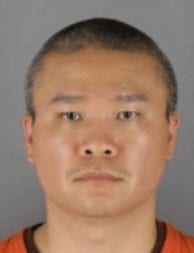
Minneapolis police officer Tou Thao’s mugshot. (Source: Hennepin County Sheriff’s Office)
Officer Tou Thao
One of the officers who helped to hold down Floyd as he died, Tou Thao, had been investigated by the department at least six times. He also did not face consequences as a result of those internal investigations.
California Passes Law to Release Police Files, Departments Then Destroy Records
In 2019, California passed a law that sought to surface decades of secret police files in the state. So what did so many police departments do in the months leading up to its effect? Destroy decades of files of use of force and other officer personnel records, including verified cases of sexual assault against the police.

Sacramento Police Department badge. (Source: SPD)
California police departments that destroyed evidence before the law went into effect include the cities of Downey, Fremont, Inglewood, and Morgan Hill. Two months after the law went into effect, more than 170 agencies had refused to turn over their records, waiting for action from the court. Other departments chose to charge extremely high fees for information, including the Sacramento Police Department that charged $25 per minute of police body cam footage, amounting in more than $25,000 for footage of five police shootings.
There are currently bills in Congress to allow the free flow of information as it pertains to police records, but police unions are fighting hard to keep their officers’ records secret. In most states, it is very, very uncommon for the public to be aware of a police officer’s history on the use of force, and it typically only comes out after he or she commits a heinous degree of excessive force against an unarmed person, and that act is caught on a witness’s phone.
Share this story
 |
 |
 |
 |
 |
 |
Fired Cops Find New Jobs At Different Police Departments
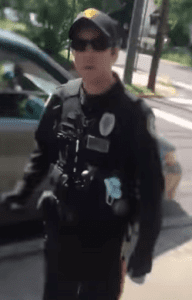
Woodlynn police officer Ryan Dubiel pepper sprays two Black teenagers as they sit on their home’s front porch on June 4, 2020. (Source)
But even in the unusual circumstance where a bad police officer is fired, he or she can simply get a new job at a different department and continue to work in law enforcement. Officers who are repeat offenders in use-of-force or other forms of misconduct typically hop around to different departments in the area, even after multiple firings.
Officer Ryan Dubiel
Consider the case of Ryan Dubiel, 31-year-old police officer who worked at nine different police departments during his tenure. He was finally arrested and will face some sort of consequences after pepper-spraying two Black teenagers sitting in their front yard without provocation. Another teen caught the footage on their phone, which is frankly the most likely reason why legal actions against Dubiel were finally taken. Woodlynne police officer Dubiel was charged with two counts of simple assault, the lowest assault offense a person can be charged with.
You may be wondering how a police officer at age 31 could have worked at nine different departments, nearly a new one every year. It’s common practice across the country for bad cops.
Officer Timothy Loehmann

12-year-old Tamir Rice in family photo. (Source: Rice family)
Take the Cleveland police officer who shot and killed Tamir Rice, a 12-year-old Black child holding a pellet gun, in less than three seconds of arriving on the scene. Timothy Loehmann had initially been dismissed from the Independence Police Department after being deemed emotionally unfit for the job. He was then hired by the Cleveland Police Department. After killing Rice on video, Loehmann was cleared of any wrongdoing by a grand jury. He continued to be a police officer until 2017, when he was fired when it was discovered he failed to tell his current department about his past dismissal with Independence PD.
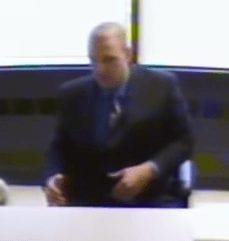
Cleveland police officer Timothy Loehmann is interviewed by his department after shooting Tamir Rice to death in Cleveland. (Source)
Loehmann then got a job as a police officer in Bellaire, OH, a small town of less than 5,000 people. However, facing public backlash, Leohmann quit his job within the first several days of employment.
In January 2020, his old police union at the Cleveland Police Department announced that they are appealing Loehmann’s firing in 2017 so that he can return to the force.
It is such a common practice to shuffle bad cops around departments, that the Brevard County chapter of the Fraternal Order of Police publicly solicited police officers that had been fired due to misconduct to come work as cops in their county. Published on June 6 to Facebook, the police union’s post read in part: “We are hiring in Florida. Lower taxes, no spineless leadership, or dumb mayors rambling on at press conferences… Plus… we got your back!”
More stories: The Lives of Ferguson & Black Lives Matter Activists Cut Too Short
More stories: Minneapolis Police Brutality Against Journalists: An Ongoing List

Brevard County police union solicits Minneapolis police officers for employment in a Facebook post during massive protests in early June, sparked by the killing of George Floyd by four members of the force. (Source)
False Information & Verified Lies in Police Reports

Minneapolis police officer cuts off oxygen to George Floyd’s brain and kills him by kneeling on his neck for nearly nine minutes. The other three officers continue to kneel on Floyd as he dies. (Source)
After making an arrest or exercising use-of-force against a person, police officers are required to fill out incident reports that contain their side of what happened. Due to the widespread availability of video, we are often able to compare what police said happened with what actually occurred. These perspectives often don’t match, particularly when an unarmed Black person is killed by police.
In the original police report surrounding the death of George Floyd, this is how police describe their own actions:
“[Floyd] physically resisted officers. Officers were able to get the suspect into handcuffs and noted he appeared to be suffering medical distress. Officers called for an ambulance. He was transported to Hennepin County Medical Center by ambulance where he died a short time later.”
We’ve all seen the video, and we know this isn’t true. There is no mention in the report of the nearly nine minutes Chauvin spent asphyxiating Floyd with his knee as he begged that he cannot breathe. In the report, police blame Floyd’s death on pre-existing medical distress instead of their killing him.

NYPD officer Daniel Pantaleo puts Eric Garner into a chokehold as other officers assist until Garner dies on July 17, 2014. (Source)
Victim’s Medical Distress Often Cited in Police Reports As Cause of Death
If the “medical distress” line sounds familiar, it’s because police often use this excuse when they kill people in their custody. Eric Garner was put in a chokehold by multiple police officers and died of asphyxiation on video. The police report blamed Garner’s poor health for the killing.
When 23-year-old Steven Barrier died in police custody on October 23, 2019, police said he died of natural causes caused by a heart attack. Barrier’s family rejected that claim, saying he never had a history of heart problems.
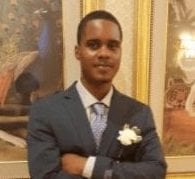
Steven Barrier in a family photo. (Source: Barrier family)
In an interview, his mother said: “My son never had any medical history about cardiac problems. I don’t know where they come up with that. I know they had to come up with something to explain how horrible they treated him.” Barrier’s family also publicly questioned why Stamford police took Steven to the department instead of the hospital, if he was indeed suffering a medical episode.
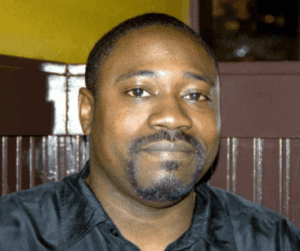
Photo of Walter Scott. (Source: Scott family)
Officer Michael Slager Shoots & Kills Michael Scott
Consider the police shooting of Walter Scott in South Carolina in April 2015. North Charleston police officer Michael Slager pulled over Walter Scott for a broken taillight. Scott ran from his vehicle, and Slager caught up, eventually Tasing him. Scott got up and began running again. Slager then pulled out his gun and shot Scott five times in the back as fled. He immediately radioed in to dispatch that Scott had grabbed his Taser, which was patently untrue, according to video of the killing.

Officer Michael Slager drops his Taser next to Walter Scott after shooting Scott in the back multiple times. (Source)
A bystander to the shooting took video of the incident, including when Slager grabbed the Taser and dropped it next to Scott’s body in an attempt to frame him for grabbing the Taser and justify the killing. The police report said that officers performed CPR on Scott after he was shot, which was untrue. In it, police repeated the lie that Scott had grabbed Slager’s Taser.
Largely due to the bystander’s video that captured the struggle, shooting, and immediate cover-up, Michael Slager was found guilty and sentenced to 20 years in prison for the death of Walter Scott.

North Charleston police officer Michael Slager. (Source: Charleston County Sheriffs Office)
Ezell Ford Shooting
In 2014, Ezell Ford was shot to death by the Los Angeles Police Department. Officers approached Ford as walking on the street and stopped him as part of an “investigative stop.” Ford was not committing a crime, he was just at the wrong place at the wrong time. The LAPD says that Ford wouldn’t show his hands, and suddenly turned around and began attacking the lead officer. They said he tackled an officer and tried to take his gun away. The officers then shot him multiple times, killing him.
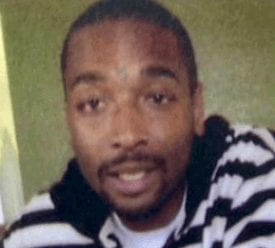
Photo of Ezell Ford. (Source: Ford family)
However, eyewitnesses to the killing dispute nearly all of what police say happened. Witnesses say Ford raised his hands in the air as police approached him. They also say that Ford did not tackle anyone, it was actually the LAPD officer who had been driving the police cruiser that sparked the violence and tackled Ford.
Finally, witnesses say that Ford was facedown on the ground with an officer on top of him. He never reached for a gun, and police shot him in the back while he laid there. The Los Angeles police officers were never charged with a crime.

Photo of Oscar Grant. (Source: Grant family)
Officer Johannes Mehserle Shoots & Kills Oscar Grant
In 2009, Bay Area Rapid Transit officer Anthony Pirone ordered 22-year-old Oscar Grant off a train. All caught on video from multiple bystanders on the stopped train, Pirone is heard using profanities and racial slurs against Grant, while he pushed him against a wall. Pirone then punches Grant in the face before kneeing him in the head, which caused Grant’s brain to hemorrhage.
Pirone placed his knee on Grant’s neck as a second officer on the scene, Johannes Mehserle, tried to reach Grant’s hands to arrest him. Mehserle wasn’t able to right away, so he pulled out his gun and shot Grant in the back. Grant died seven hours later at the hospital.
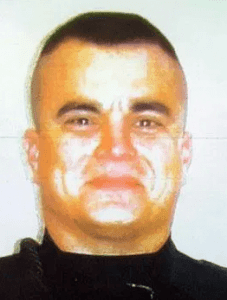
Officer Anthony Pirone (Source: Bay Area Rapid Transit)
BART police report paints a very different picture from what video evidence, and dozens of witnesses say. Pirone claimed that Grant actually attacked him: “He started kneeing me, then he kicked me…” Grant did none of those things. The officer then claimed he felt as if he was “fighting for [his] life,” but in truth, Grant was the only one in danger of dying.
So when police lie about trivial things in their day, like wrongly accusing Shake Shack employees of poisoning their milkshakes, or framing McDonald’s employees for writing “f****** pig” on a coffee cup, consider that if they’re so comfortable lying about ridiculous situations like this, how far will they go to protect themselves after doing something truly horrific and their reputation is on the line?
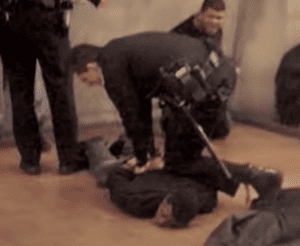
Oscar Grant lays on the train platform floor as an officer kneels on his back on January 1, 2009 in Oakland. Moments later, Mehserle shoots him in the back. (Source)
Police Show Public Solidarity With Bad Cops
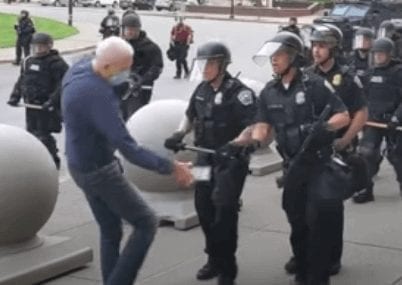
Martin Gugino, 75, is shoved by officers Aaron Torgalski and Robert McCabe after attempting to return a police helmet on June 5, 2020. (Source)
When bad police officers commit crimes on the job, how do their fellow officers respond? In most filmed cases, they dive in right with them. During anti-police brutality protests, 75-year-old protester Martin Gugino attempted to return a police helmet to the group of riot police entering the scene. Two Buffalo officers, Aaron Torgalski and Robert McCabe, shoved Gugino back, causing the old man to crack his skull on the concrete.
As he lay on the pavement bleeding from his head and ears, the other Buffalo officers continued on, walking over his body to attack peaceful protesters. As public outrage swelled at the violence caught on video, all 57 officers in the entire Buffalo Police Department Emergency Response Team resigned in solidarity with the two bad cops.

Philadelphia police officer Joe Bologna violently beats and drags a 20-year-old female protester in June 2020. (Source)
Gugino is still in the hospital, and can no longer walk due to brain damage sustained by the police. And like previous examples, the original police report said that the man tripped and fell of his own accord, despite the attack being filmed.
Officer Joe Bologna
Or consider the video of the Philadelphia cop who severely injured a 20-year-old college student after violently beating her on the head with his baton multiple times in broad daylight. Philadelphia Police Inspector Joe Bologna was suspended for 30 days for the violent act, but received a standing ovation and hero’s welcome from his fellow officers when turning himself in for assaulting the student from Temple College.
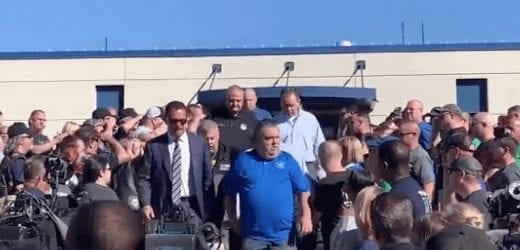
Philadelphia police officer Joe Bologna receives standing ovation from fellow officers as he turns himself in for beating a Temple College student. (Source)
None of this is new or different than how it’s always been. In 2005, New Orleans police killed two people and injured four others one week after Hurricane Katrina hit. None of the six people attacked, all Black, had committed any sort of crime. It was then discovered that officers had attempted to cover-up the killings, and initially lied in the report by saying that the civilians had shot at them first. None of the victims were armed. During the trial two years later, fellow officers were photographed holding signs “Heroes” and showing public support for the murders.
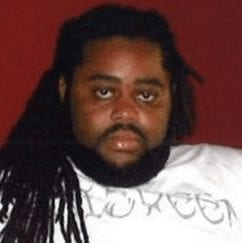
Howard Bowe was killed by the Hallandale SWAT team in 2014. (Source: Bowe family)
In fact, officers have resigned over their police chiefs kneeling with protesters against anti-Black police brutality. When Hallandale Beach Police Chief Sonia Quinones kneeled alongside protesters, the entire SWAT team resigned. The focus of the anti-police brutality protest was about the 2014 killing of Howard Bowe after the SWAT team raided his home, killed his dog and then Bowe. Those officers were cleared of any wrongdoing, but the city paid out $425,000 to Bowe’s family.
Officer Robert Cattani
These aren’t isolated incidents. They are part of the fabric of being a police officer in the United States. After NYPD lieutenant Robert Cattani knelt alongside protesters in late May, he sent an email to his fellow officers to apologize for it. He wrote that kneeling with anti-police brutality protesters “goes against every principle and value I stand for.”
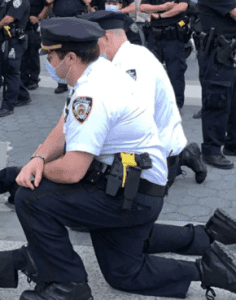
NYPD officer Robert Cattani kneels with protesters on May 31, but later sent an email on June 4 to fellow officers, apologizing for the act. (Source: Peter Gerber)
He continued to say that “I know that it was wrong and something I will be shamed and humiliated about for the rest of my life.”
Cattani did not apologize for the horrific attacks on peaceful protesters, but rather the acknowledgement of the violence police inflict on others. The shame is not in killing and brutalizing civilians, the shame is in attempting to put any stop to it.
Officer Stephen Mader
In fact, take the case of Stephen Mader, a former Weirton police officer who refused to shoot a black man who was clearly in emotional distress in 2016. The officer actually tried to de-escalate the situation, and repeatedly refused to kill Ronald Williams, even as Williams said, “Just shoot me.” However, when two of his fellow officers arrived on the scene, one immediately shot and killed Willams.
Guess which officer was fired? Mader lost his job for not shooting Williams. Some months later, Mader reached a settlement with the city of Weirton for $175,000.
More stories: COVID-19 Vs H1N1: A Comparison of Trump’s & Obama’s Responses to Pandemic – PT 1
More stories: How Isaac Wright Overturned Kingpin Conviction & Exposed Police Misconduct
Few Charges, Easy Punishments for Shooting Unarmed Black People

Charles Kinsey lays on the ground with his hands raised as his patient sits next to him and plays with a toy truck. Moments later, a member of the SWAT team shoots him in the leg. (Source)
It is rare for a police officer to face any form of consequence after using excessive force or killing an unarmed person. It’s even rarer that a cop is charged with a crime and justly punished after being found guilty, even when that crime is fully captured on video.
Officer Jonathan Aledda Shoots Charles Kinsey
Take the shooting of Charles Kinsey, a Black mental health therapist who was sitting with his 27-year-old autistic patient on July 18, 2016. When police arrived on the scene, Kinsey laid on the ground with his hands raised, and his patient remained sitting and playing with a toy truck. A civilian took video of the incident.
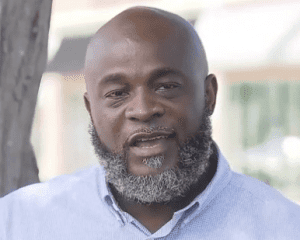
Charles Kinsey speaks to reporters after being shot by North Miami police officer Jonathan Aledda. (Source)
The video shows Kinsey yelling multiple times not to shoot his patient and telling police that they are both unarmed. He also repeated that his patient was playing with a toy truck, and not a weapon of some kind. A member with the North Miami Police Department SWAT team, Jonathan Aledda, then shot at the pair three times, striking Kinsey once in the leg.
Police swarmed both men, handcuffed Kinsey, and left him bleeding on the ground for 20 minutes before paramedics arrived. Both Kinsey and his patient survived the shooting.

North Miami police officer Jonathan Aledda. (Source: University of Miami)
Aledda never saw prison time for shooting Kinsey in 2016. He was sentenced to 100 hours of community service, one year of probabtion, and had to write an essay about why he should communicate with a suspect before shooting them. The judge then purged the shooting from his criminal record, citing immunity. Aledda completed his one year of probation in November 2019.
List of Unarmed Black People Killed By Police & What Happened to the Officers
This is not an even remotely comprehensive list because the numbers of unarmed Black people killed by police are so staggering, but I will continue to add names of those killed and information about their cases during the month of June 2020.
The majority of these killings happened from 2014 to present. In all of these cases, one of two outcomes occurred: 1) The police officer was never charged with the killing, or 2) the officer is charged with the killing, but is found innocent of the crime. Listed in no particular order:
Breonna Taylor
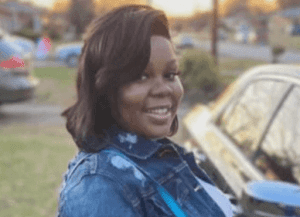
Breonna Taylor. (Source: Taylor family)
In March 2020, Breonna Taylor was asleep in her apartment with her boyfriend when Louisville police forced their way in as part of a no-knock warrant. Police shot Taylor eight times, killing her. Police say they were investigating drug crimes, though Taylor was never considered a suspect. According to a wrongful death suit filed by her family, Louisville police were searching for a man named Jamarcus Glover, who did not live at the apartment, and had already been detained by police.
When Taylor’s boyfriend, Kenneth Walker, awoke to three men trying to enter the apartment, he believed someone was trying to break in. The officers, not wearing body cams, entered the apartment. Walker fired a shot at the men, hitting one in the leg. Louisville police then shot 20 rounds in the apartment, killing Taylor.
Police did not find any drugs in the apartment. Her original police report is nearly blank. The three officers, Jonathan Mattingly, Myles Cosgrove, and Brett Hankison, are not facing any charges, though there is a massive national push to force the officers to face some form of justice.
Elijah McClain
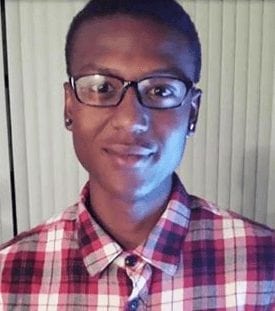
Elijah McClain. (Source: McClain family photo)
On August 27, 2019, 23-year-old Elijah McClain was walking home in Aurora, CO, after picking up an iced tea for his brother. Because he was anemic and often cold outdoors, McClain wore an open-face ski mask as he walked down the street toward his home.
Three Aurora police officers, Jason Rosenblatt, Nathan Woodyard, and Randy Roedema, approached him. Released body cam footage shows Rosenblatt attempting to and Woodyard succeeding in putting McClain into a carotid hold, cutting off oxygen and blood to his brain. This chokehold position forced McClain to lose consciousness.
When he awoke some moments later, the officers were on top of him, continuing to brutalize while he lay on the ground. In police body cam footage, McClain begins to sob, pleading “I can’t breathe, please.” Officers yell back at him to relax and “chill.”
McClain cries out again: “I can’t breathe.”
After some moments, McClain tries to take deep breaths and pleads, “I was just going home. I’m just different, that’s all. That’s all I was doing, I’m so sorry.”

Aurora police body cam footage of Elijah McClain, unresponsive, as police and EMTs prepare to move him. (Source)
Aurora police then talk over him, with one officer saying to another: “He was going for your gun, dude.”
McClain responds right away, in between haggard breaths: “I have no gun. I don’t do that stuff. I don’t do any fighting. I don’t use guns. I don’t even kill flies. I don’t eat meat, I don’t judge people.”
Officers then say that he was trying to walk away from them, as though that justifies choking him now.
McClain says, “Forgive me, all I was trying to do was become better, and I’ll do it, I’ll do it.”
More moments pass, and McClain says, sobbing: “I can’t breathe correctly.” He then vomits.
After the young man became unresponsive as a direct result of police actions, the three Aurora officers called an ambulance. Paramedics injected McClain with ketamine, and he had a heart attack on the way to the hospital. Three days later, Elijah McClain was taken off life support and died on August 30.
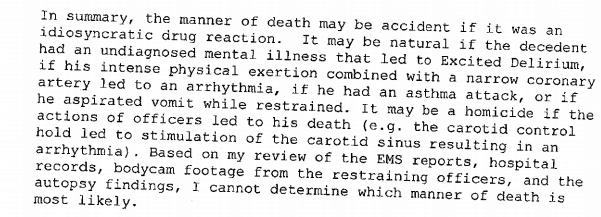
Cina suggests a multitude of possible causes for McClain’s death, including excited delirium, asthma, arrhythmia, and homicide by officers, but does not conclusively give a cause of death. (Source)
McClain was unarmed, and he was never charged with a crime. It should also be noted that Roedema, Woodyard, and Rosenblatt later said that all three of their body cams fell off somehow, which they say explains why large portions of the video are covered up. When McClain was on life support in the hospital, he was covered in bruises and other injuries. This was also noted by the medical examiner after his death.
As with past police killings of unarmed Black men and women, McClain’s autopsy report suggested “excited delirium”, arrhythmia, or asthma may have contributed to a “natural” death. The medical examiner, Stephen J. Cina, also suggests in the report that McClain’s death could be a homicide on the part of the officers if “the carotid control hold led to the stimulation of the carotid sinus resulting in an arrhythmia.” In conclusion, Cina writes that McClain’s death is “undetermined.”
On November 22, 2019, prosecutors decided they would not charge Rosenblatt, Woodyard, or Roedema with McClain’s killing. All three officers then went back to the streets. After a petition on Change.org titled “Justice for Elijah McClain” garnered more than two million signatures, Gov. Jared Polis announced that his office would conduct a new investigation into the case on June 24, 2020.
Ryan Stokes

Ryan Stokes. (Source: Stokes family)
In 2013, a drunk white man named Jordan Miller walked out of a country music bar and falsely accused Ryan Stokes of stealing his phone. Kansas City police then tear gassed Stokes and his friends, forcing them to run from the scene. Officer William Thompson caught up to Stokes as he was complying with another officer’s orders in a parking lot and shot him twice in the back. Stokes was carrying his phone and his keys when he died.
In a large investigative piece, reporters at KCUR found that police had lied about Stokes stealing the phone, being armed, and forcing a standoff with police. No charges were filed against the officer who killed him. In fact, in 2020, a judge granted Thompson immunity, saying the use of deadly force was “responsible.”
Tamir Rice

Tamir Rice. (Source: Rice family)
Police were called to the Cudell Recreation Center in Cleveland in response to reports of a young man holding a gun. Tamir Rice was a 12-year-old Black child playing with a BB gun with his sister nearby. In security footage, a Cleveland police cruiser is seen speeding up to the gazebo where Rice was standing. The car barely comes to a stop before officer Timothy Loehmann jumps out and shoots Rice at close range. Rice was shot within three seconds of police arriving on the scene. A bullet entered the child’s torso, and he died the following day. A second video shows the police tackling and arresting Rice’s 14-year-old sister, who ran to him within two minutes of the shooting.
While he lay bleeding on the pavement, both Cleveland police officers declined to give Tamir Rice first aid for four minutes.

Video footage taken approximately one second before Cleveland police shoot Tamir Rice on November 22, 2014. (Source)
The officer who drove the patrol car, Frank Garmback, was the subject of an excessive force lawsuit in which Cleveland paid $100,000 in a settlement. In 2010, a woman named Tamela Eaton had called the police about a car in her driveway. Garmback forced her into a chokehold and struck her multiple times. She was then charged with punching an officer and resisting arrest, but was found innocent by a jury. Similarly with other bad cops, the jury settlement of $100,000 from the excessive use-of-force case is missing from Garmback’s police personnel file.
Cuyahoga County Prosecutor Tim McGinty conducted an investigation into the shooting, but he did not interview either Loehmann or Garmback. A grand jury declined to indict either man for the death of Tamir Rice. Frank Garmback was suspended 10 days for his role in the shooting, and then went back to the force. Loehmann got a new job at a different police department, but soon quit after public outcry.
Natasha McKenna
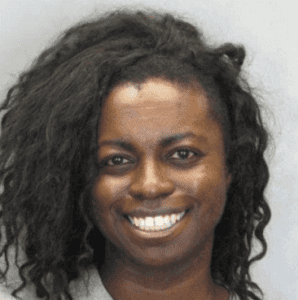
Natasha McKenna. (Source: McKenna family)
Natasha McKenna was a 37-year-old Black woman being held in Fairfax County Adult Detention Center on suspicion of attacking a police officer. She had a history of mental illness, including schizophrenia. While in her cell, she complied with an officer’s orders to make her hands visible so that she could be handcuffed. McKenna then began to struggle, screaming “You promised you wouldn’t hurt me!” A team of six people with the Sheriff’s Emergency Response Team then restrained McKenna in handcuffs, leg shackles, and a spitting mask.
When McKenna would not bend her legs to be placed in a restraint chair, an officer shot her with a Taser four separate times, with each shot carrying 50,000 volts of electricity. McKenna was 5’4 and weighed 130 pounds. After a few minutes, she stopped breathing. Police called an ambulance, and she died some days later.
The coroner stated her cause of death was “excited delirium” linked to stun gun use, and that her death was “accidental.” Excited delirium is a common cause of death coroners choose to list when restrained people die in police custody. It is disproportionately attributed to the deaths of Black and Latinx victims. In fact, one of the officers who contributed to George Floyd’s killing, Thomas Lane, said to Chauvin as he killed Floyd, “I am worried about excited delirium or whatever.”
Excited delirium is not recognized as a medical condition by the American Medical Association, American Psychiatric Association or the World Health Organization. None of the officers involved in McKenna’s killing were charged with a crime.
George Floyd
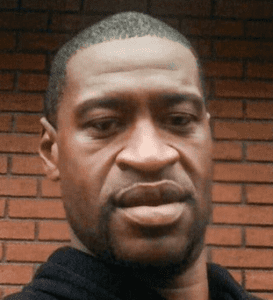
George Floyd. (Source: Ben Crump Law)
On May 25, 2020, George Floyd was accused by two store employees for using a counterfeit $20 bill to buy cigarettes. One employee called the Minneapolis police. Officers James Kueng and Thomas Lane then arrested Floyd and brought him to their police vehicle. Two more officers, Derek Chauvin and Tou Thao arrived on the scene.
Floyd told officers that he was claustrophobic and would panic if forced to sit in the backseat of the police car. After struggling with Kueng in the backseat, Chauvin stepped in and dragged Floyd out of the car and threw him on the asphalt. Chauvin then kneeled on Floyd’s neck as he lay still. The other officers kneeled on the rest of Floyd’s body, with Kueng on his chest, Lane on his legs, and Thao standing and watching silently.
In multiple witness videos, Floyd is heard repeatedly begging that he cannot breathe. He said “I can’t breathe,” “I’m about to die,” “Don’t kill me,” and “Please, the knee on my neck, I can’t breathe.” The Minneapolis officers do not appear the least bit concerned, with Chauvin telling Floyd to “Relax,” and Thao even joking with witnesses as Floyd dies: “This is why you don’t do drugs, kids.”
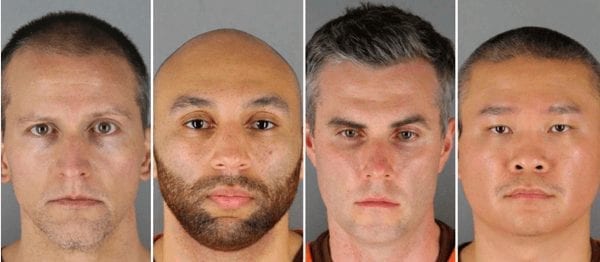
Minneapolis police officers Derek Chauvin, James Kueng, Thomas Lane, and Tou Thao. (Source: Hennepin County Sheriff’s Office)
After the 8 minutes and 46 seconds of asphyxiation, one officer checked Floyd’s pulse and found none. No officer provided CPR or any sort of medical assistance. They eventually called an ambulance, and George Floyd was pronounced dead at the hospital.
In the officers’ official report, there is no mention of police actions that led to Floyd’s death, namely, kneeling on his neck until he died. They said that Floyd appeared to be “suffering medical distress” of some sort, and that’s what led to his death.
Derek Chauvin was fired by the MPD one day after Floyd’s killing. He was then charged with third-degree murder, which was elevated to second-degree murder. One June 4, Keung, Lane and Thao were arrested on charges of aiding and abetting second-degree murder. They had their first court appearance on June 29, 2020.
Jamar Clark
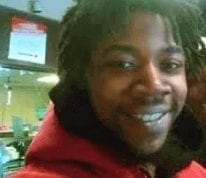
Jamar Clark. (Source: Clark family)
In 2015, 24-year-old Jamar Clark and his girlfriend were at a party at a friend’s apartment in Minneapolis. During the night, the friend began to fight with her husband, and Clark’s girlfriend tried to intervene. Clark and his girlfriend soon left and someone else at the party called an ambulance. When it arrived, Clark’s girlfriend entered the ambulance for treatment. Clark approached it soon after. However, paramedics and police asked Clark to step away. Police then immediately got out of their car and forced Clark to the ground, arresting him. As he lay on the ground, police shot Clark in the head, killing him. He was not armed.
After the shooting, Minneapolis police said there was no body cam or dashcam footage of the killing. Witnesses said that Clark was handcuffed when he was shot to death, but police said he was not. The police also said that Clark struggled and wanted a confrontation, but witnesses said he was laying still on the ground when police shot him.
Minneapolis police were never charged in the killing of Jamar Clark.
Philando Castile
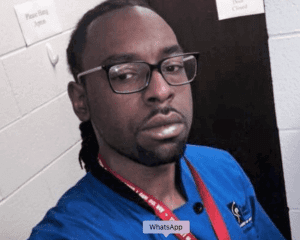
Philando Castile. (Source: Castile family)
In 2016, St. Anthony police officer Jeronimo Yanez pulled over Philando Castile’s car, which was carrying his girlfriend and their 4-year-old daughter. Castile handed over his license and registration. Because he was legally required to do so, Castile then calmly said, “Sir, I have to tell you that I do have a firearm on me.” Yanez then immediately placed his hand on his weapon, and frantically told Castile multiple times not to pull it out.
Castile continues to calmly say he will not reach for the gun in his vehicle, and never does. Within seconds, Yanez quickly backs up and shoots seven times at Castile. Castile is heard on video as he dies saying, “I wasn’t reaching for it.” Yanez and his partner were found not guilty of second-degree manslaughter, one of the lowest possible crimes to be charged with.
John Crawford

John Crawford. (Source: Crawford family)
While shopping in Walmart, John Crawford, a 22-year-old Black man, grabbed an unpackaged BB gun that went on sale in 2014. A white man named Ronald Ritchie, called the police, claiming Crawford was pointing it at people. Two Beavercreek police officers arrived on the scene. They said Crawford did not respond to officer’s commands, and one officer, Sean Williams, shot him to death. However, store video shows Crawford talking on his phone when officers rush him and shoot multiple times. There were no verbal commands given, and he had no time to comply, regardless.
Neither officer was ever charged with a crime. Store video also proved that Crawford had never pointed a gun at anyone, and that Ritchie had intentionally lied to 911 dispatchers. Ritchie was also never charged with a crime.
Oscar Grant
On New Year’s Day in 2009, Oscar Grant was riding a train from San Francisco. Responding to calls about a fight, Bay Area Rapid Transit police officers ordered Grant and a handful of people off the train at Fruitvale station. Video taken by one of the passengers shows BART officer Anthony Pirone walking up to Grant and punching him in the face as he stood against a wall. Grant falls to the ground and puts his hands in the air.

Oscar Grant. (Source: Grant family)
Pirone can be heard using racial slurs as he then knees Grant in the head. His brain began to hemorrhage from the blow. Pirone forces Grant on his stomach, and kneels on his neck. A second officer, named Johannes Mehserle, then tries to get a hold of Grant’s hands. When he is not immediately able to, Mehserle shoots Grant in the back. He died several hours later at a hospital.
Pirone claimed in his original report that Grant had been the aggressor, and had actually been attacking police officers. He said that Grant had kneed and kicked him, and that he feared for his life. Dozens of cellphone videos, officer body cams, and witnesses at the scene, however, prove the truth. That Pirone targeted and brutalized Oscar Grant, yelling racial epithets all the while, and Mehserle shot and killed him as he lay on the ground.
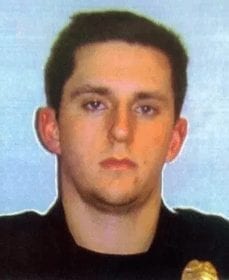
Former BART police officer Johannes Mehserle. (Source: Los Angeles Superior Court)
Despite more than ample evidence, Mehserle was found innocent of second-degree murder. Jurors found him guilty of involuntary manslaughter. On November 5, 2010, Johannes Mehserle was sentenced to two years in prison, but was released on June 13, 2011. Anthony Pirone was fired from BART on April 21, 2010. It does not appear that he ever received another job as a police officer since Grant’s killing.
Ezell Ford
On August 11, 2014, Ezell Ford was walking down the street in Florence, CA. Ford had been diagnosed with bipolar disorder and schizophrenia as a teenager, and was taking medication. Residents in the area, as well as local police officers, knew that Ford struggled with mental illness. Two Los Angeles police officers, Sharlton Wampler and Antonio Villegas, spotted Ford and stopped him as part of an “investigative stop.” Ford was not committing a crime when he was stopped.

Ezell Ford. (Source: Ford family)
Police officer accounts and witness accounts of what happened differ wildly at this point. Wampler and Villegas said that Ford refused to show them his hands when they approached him. They also said that Ford suddenly whipped around “basically attacked the lead officer.” A struggle ensued and officers said that Ford tried to grab one of their guns. Villegas said he feared for his life and shot Ford in the back.
However, witnesses to the shooting counter nearly everything the LAPD officers said happened. They said that Ford immediately put his hands in the air when he saw police approaching him on the street. Additionally, they said that officers incited the violence by quickly tackling Ford and forcing him to the ground. While he lay on the ground, police shot Ford three times, killing him.
The entire encounter lasted 13 seconds. Neither Wampler nor Villegas were ever charged with a crime, and it appears that they both continue to be police officers today, though I can’t independently confirm that.
Share this story
 |
 |
 |
 |
 |
 |







0 Comments